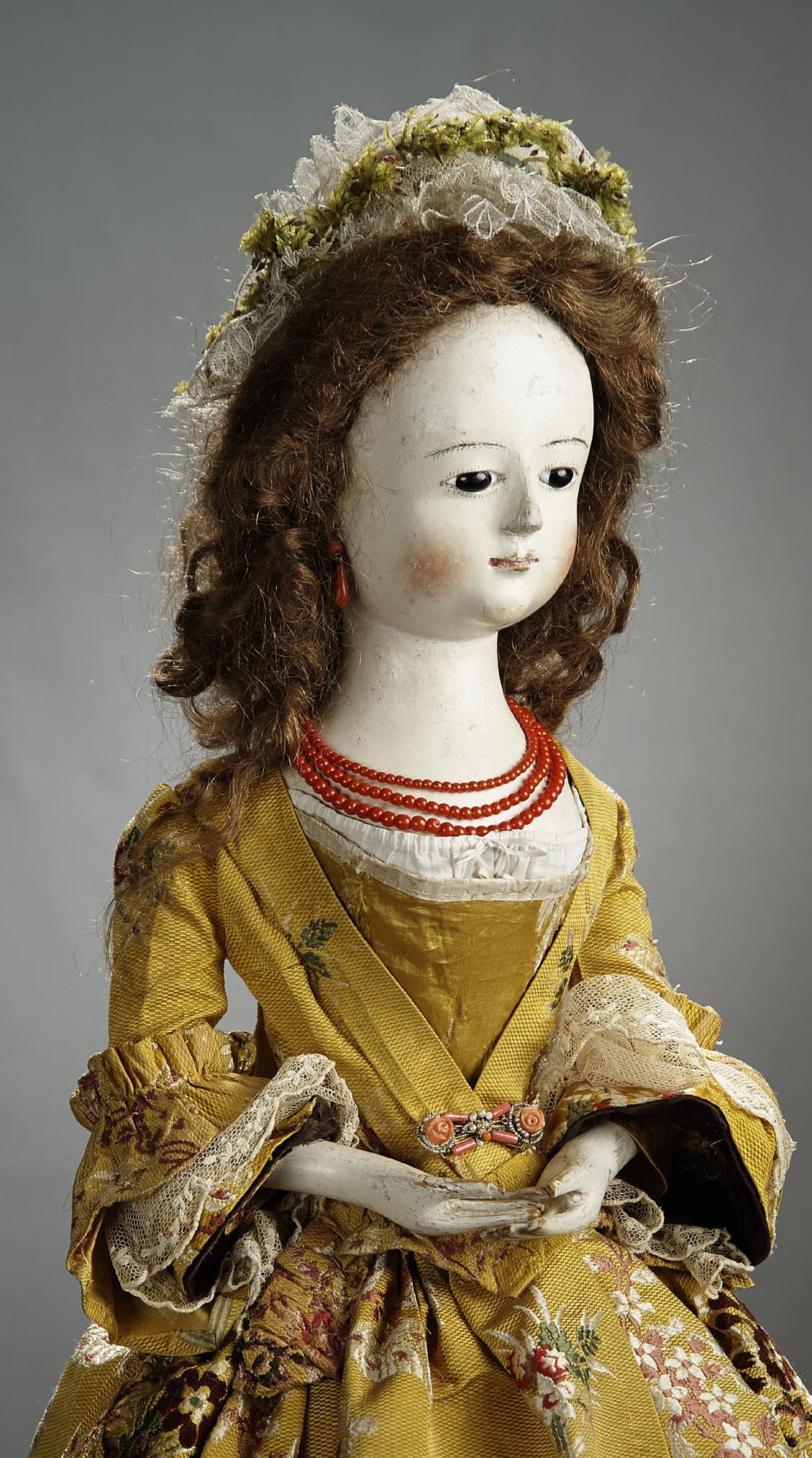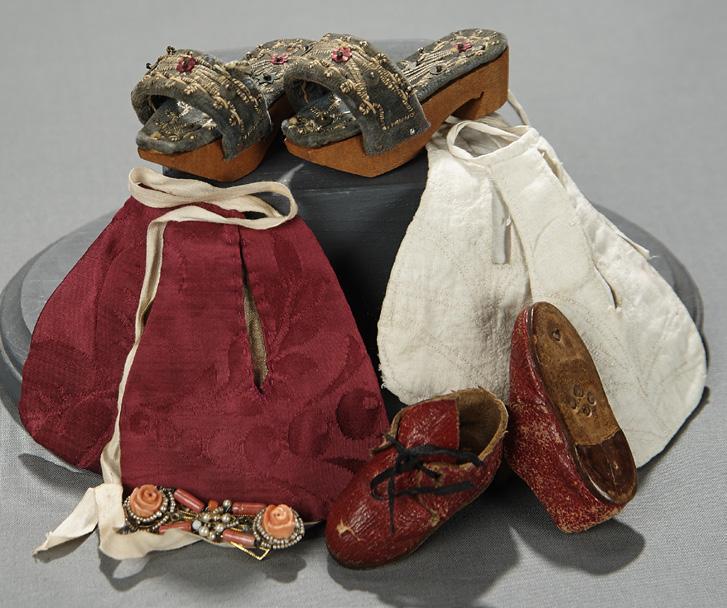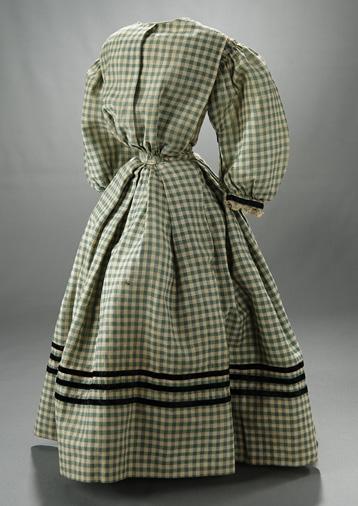
3 minute read
The Well-Bred English Wooden Doll at Auction May 15-16, 2021
Standing front and center of any doll collection fortunate enough to offer haven would surely be an English wooden doll of the mid-1700s.
That the doll would also be of regal stature and with a distinctive portrait-like face would seal its role as the queen of the collection. And should that doll also be the owner of a fine trousseau of costumes, some from its own moment of creation, and others of later decades, her triumph is complete.
Such a doll is the 29” English wooden lady, circa 1740, presented at Theriault’s Marquis May auction “And Then The Page Turns…”. Previously the property of the Rosalie Whyel Museum of Doll Art.

An inside view of the front panel of the silk robe a la Francaise illuminates the applied stiffening rods which are likely bamboo or quill and are entirely hand-stitched.

The trousseau of the doll includes two “pockets” designed to be hidden inside the folds of a gown skirt, for hiding coins, keys, a hanky or other treasure. The doll owns two pairs of shoes which were handmade specifically to fit her hand-carved feet. The fine jewelry brooch is intricately constructed.
and featured in the book The Heart of the Tree, Early Wooden Dolls to the 1850s, by Rosalie Whyel and Jill Gorman wherein the doll was described as a “superb example” of its type, the doll is costumed in an 18th century gold embroidered silk faille robe a la francaise, a popular style throughout the period 1720 and 1780, constructed from the same fabric as a similar gown created for the actual lady of the doll’s manor; that lady gown is also offered in the auction, just as it was shown in the Museum.
The statuesque 29” lady appearing in her undergarments. The thickly quilted petticoat is all hand-stitched.




Three other costumes of particular note, dating to the origin of the doll, are of finely woven cotton fabrics with handmade block-print or dye-painted designs. One of the robes has a crisp chintz finish achieved by a complex and time-consuming mordanting of the fabric after the hand-painted or block-printed designs were applied. Another robe has an intriguing reverse print center panel framed by a hand-stitched silk braid border.
In all, the doll owns 12 gowns, most of them especially created for the doll during the mid-1700s. Yet, evidently the doll remained in high esteem within her family for many decades, passing from one generation to another, as four of the gowns, which were indubitably made for this doll, date from about 1840, nearly a century after the actual doll was created. The title of the auction “And Then The Page Turns…” is aptly symbolized by this doll whose wardrobe is a study in fashion changes over a century.
And as for the doll, itself, she is a wonder. Her size is perfect, not only commanding respect, but also an indication that she was originally commissioned for an aristocratic estate, for only the wealthy could afford the price that the larger dolls commanded. So, too, is her portrait like expression, with subtle shaping of the head, a dainty little chin, eyes demurely cast down, and yet a stately bearing to offset the beguiling humility.
Now nearly three hundred years old, this outstanding doll, packed with all costumes and accoutrements, will continue her life story as the page turns to the next chapter at Theriault’s May 15-16 Marquis auction.
FOR MORE INFORMATION CALL 410-224-3655, VISIT THERIAULTS.COM OR EMAIL INFO@THERIAULTS.COM




Above: The hand-painted or block-printed cotton fabrics featured intricately patterned foliage and scrolls; indigo blue was a popular color. Below: The crisp chintz finish on one gown is shown in close-up detail in this photo.




